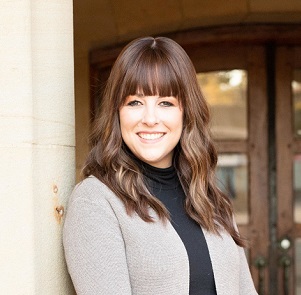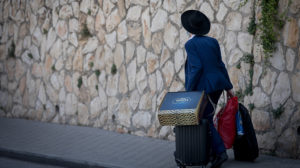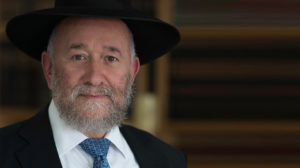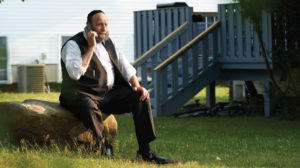School of Life

N
ew school years are fraught with expectations. Teachers have expectations that their students will be manageable, that parents will be supportive, and that the administration will provide for their needs. Parents have expectations that their children’s teachers will be capable, that the administration will be understanding, and that their children will toe the line. Administrators have expectations that their teachers will flexible, the parents will be supportive, and the students will be receptive.
But expectation is often the partner to stress. For many children, and consequently parents, summers are a relief from a challenging school year. Wake-up times are later, dress codes may be more relaxed, and days are filled with summer activities that have zero academic requirements. Children who struggle in school often thrive in the summer months, especially those who attend camps where the combination of the fresh outdoors and informal education works its wonders. But come August with school supply sales and welcome-back letters from school, concerns creep up, and with them, anxiousness about getting back to school. And often it’s not just the students who are anxious.
Parents wonder: Will the teachers be firm yet accommodating, structured yet creative, demanding yet flexible? Will the teachers be seasoned but not burnt out, educated but also experienced? Or perhaps the teachers have never taught a day in their life but will prove to be superstars — or train wrecks?
Teachers wonder: Will students be coming in strong from the previous year with the skills needed to succeed in their class? Will they be respectful and courteous? Will they be receptive to the curriculum the teacher worked on all summer? Will there be students with needs that will be challenging to meet? And finally, will the parents be partners?
But what do students wonder? What do they want from their teachers? What do they want to achieve in the classrooms they occupy eight-plus hours each day?
No doubt, the answers to these questions will vary based on the age of the students and the type of school they attend. Universally speaking, however, students want their teachers to be kind, fair, engaging, and caring — all while teaching them. Because while they might complain about school, most students want their teachers to actually teach them, and do it well, while they’re in school anyway.
In my 15 years of teaching in three different cities in a wide range of schools, I have found that kids typically want to be given expectations, and they want to rise to meet them. They want teachers to be reasonable and provide scaffolds of support, if need be, to enable them to succeed. They want to learn. They want to obtain skills. And when they realize while taking college courses that they know how to write an essay because their high school teacher showed them how, they feel deep gratitude and the satisfaction of a knowing that their investment paid off.
As much as children want to be taught, at their core, children want to be liked. They want to be accepted, right answer or not. If students know their teacher likes them, they will work for that teacher. But teachers should not determine if they like their students based on personality traits alone. To like a student means recognizing his or her strengths and facilitating the use of those strengths in the classroom through multimodal learning. It means letting students shine and letting them know they shined. It also means challenging them to accomplish something they thought they could never do, and then applauding them for their efforts.
Students don’t necessarily appreciate the wisdom and erudition of a teacher who stands in front of the classroom lecturing for 45 minutes. They appreciate being given the skills to do something and then actually doing it. There’s nothing like the satisfaction of a job well done, and that job can be solving an algebraic equation, writing a detailed outline for an essay, presenting a long-term project, or cracking a Ramban with a classmate. Cooperative learning and project-based strategies transform the learning experience from the teacher being a “sage on the stage” to a “guide on the side.” As a result, the teacher becomes much more than one who delivers information. She is a facilitator in the learning process. This is the type of teacher to which students respond best. And this is why classrooms across the country have, over the past couple of decades, moved from being teacher-centered to student-centered.
Students yearn to be respected, and finding ways in the classroom to create an atmosphere of mutual respect is essential. A teacher can respect students’ time by putting objectives for the daily lesson on the board, respect students’ thinking-skills by acknowledging questions, respect students’ opinions by offering validation, respect students’ learning abilities by utilizing techniques that meet students’ various learning styles, and respect students’ struggles by facilitating learning to accommodate individual needs.
And although a teacher can learn about creating mutual respect in the classroom from a book or a college course, she can only really understand its power by seeing its effects on real-life students.
While completing my master’s in Jewish education, I took my first full-time teaching job in a Jewish community school teaching middle school English and Judaic studies. I was just 21 when I started out; the school was a college preparatory school that provided a Jewish education and culture for students who might otherwise have been enrolled in local private schools. All the resources, amenities, and extracurricular programs of any excellent college-prep K-12 school were provided, with the addition of a strong Judaic studies program taught by Orthodox rabbis and teachers. Teaching there for nine years taught me that no matter how good a school is, no matter how many awards it has earned or how many students it has enrolled, the key to its success is striving for excellence. Striving: always yearning and growing, but never arriving.
I took my experience with me to a Bais Yaakov school where I signed on to teach high school English. I brought my colored dry-erase markers and dutifully put up the lesson’s objectives on the board each day, as I had learned in graduate school and had practiced in my previous school. But my new students were not used to this and wondered (and maybe doubted) why I was telling them what they were going to achieve by the end of the lesson. I knew that for a 45-minute period to be utilized properly, it makes sense to teach with the end in mind — and to let students in on the secret. To give them a schedule of sorts so they know what to expect and can mentally prepare themselves for the next task. Because I would appreciate the same thing. My students quickly began to love this simple ritual of mine and something as basic as colored markers and a quick list on the board became a source of excitement — and my signature trademark.
While my Bais Yaakov students were different religiously and culturally from my former students in the community school, they were learning so many of the same things — just with a little bit of censorship. While they weren’t trying to get into Ivy League schools, my girls really wanted to learn and succeed. They appreciated the opportunity to work hard and see the fruits of their labor. And most importantly, they proved themselves to be young adults who wanted to be respected, as well as to show respect. What better place to foster these desires than in a classroom around the shared experience of learning and relationship-building?
Teaching in different types of schools to different types of students from various backgrounds — religious, cultural, and economic — made me realize how really, all students are the same on the inside. They are children. They yearn to be understood, cared for, tended to, and loved. Even if they don’t realize it, and most certainly if they don’t show it. And to fulfill the essential needs of my students, it really didn’t matter what subject I was teaching them. I had to remember that the material was only a means for growth, a medium to enable me as their teacher to build them up as developing human beings.
Every school can be a place where self-worth, self-knowledge, and latent potential are nurtured and actualized — a place where the future adults of Klal Yisrael can look back at and say that there was where they learned to grow. Because they were recognized and appreciated for who they were and what they had to offer, and then given opportunities to become more.
It’s not just what students want. It’s what we all want.
Originally featured in Mishpacha, Issue 724. Alexandra Fleksher is an educator, a published writer on Jewish contemporary issues, and an active member of her Jewish community in Cleveland, Ohio.
Oops! We could not locate your form.













